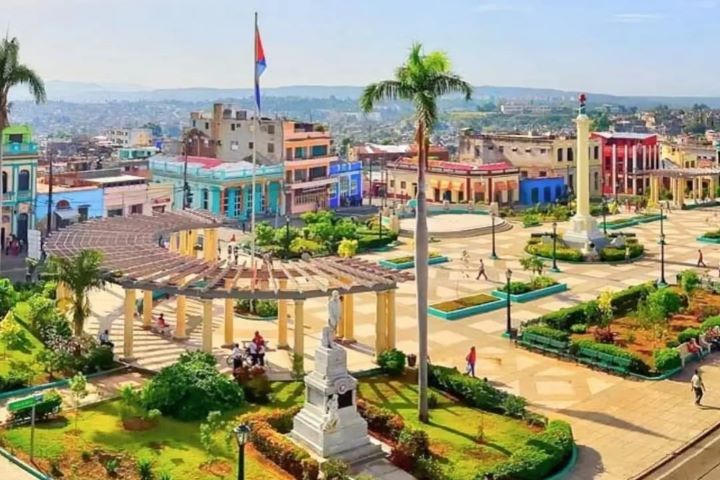



Santiago de Cuba is the capital of Cuba's southeastern Santiago de Cuba Province, facing a bay off the Caribbean Sea. Founded by the Spanish in 1515, it's known for colonial architecture and revolutionary history. The city's distinctive Afro-Cuban cultural influences are on display during July's Carnaval, a festival with drum-beating parades featuring colorful costumes and son dancing, a precursor to salsa. ― Google
November to April (Dry Season):
Warm and sunny, with temperatures around 22–28°C — ideal for exploring and outdoor festivals.
May to October (Wet Season):
Hot and humid with frequent showers; hurricane risk peaks in August–October.
By Air:
Fly into Antonio Maceo International Airport (SCU), located about 15 km from the city center.
By Road:
Connected by highways and buses to Havana, Holguín, and other Cuban cities.
By Sea:
Port for cruise ships and ferries, including connections to Jamaica and the Bahamas.
Castillo del Morro (San Pedro de la Roca Fortress):
UNESCO World Heritage site overlooking the bay — historic fort with stunning views.
Parque Céspedes:
Central plaza lined with colonial buildings, cafes, and the city cathedral.
Céspedes Cathedral:
Historic church dating back to the 19th century.
Casa de la Trova:
Famous music venue showcasing live traditional Cuban music.
Santa Ifigenia Cemetery:
Final resting place of José Martí, Fidel Castro, and other Cuban heroes.
Moncada Barracks:
Museum and historic site commemorating the 1953 revolution attack.
Gran Piedra:
Nearby massive volcanic rock offering panoramic views after a steep hike.
Enjoy live salsa, son, and trova music at Casa de la Trova or local bars.
Explore historic sites tied to Cuba’s colonial and revolutionary history.
Visit art galleries and craft markets for local artwork and souvenirs.
Hike or drive to Gran Piedra for nature and stunning vistas.
Attend vibrant festivals like the Carnaval de Santiago in July.
Sample local cuisine and street food around Parque Céspedes
Luxury:
Meliá Santiago de Cuba, Casa Granda Hotel.
Mid-range:
Hotel Casa Blanca, Hotel Don Pepe.
Budget:
Casa particulares and guesthouses throughout the city.
Traditional Cuban dishes featuring seafood, pork, and tropical fruits.
Popular local dishes: Congri (rice and beans), roasted pork, yucca, and fresh fish.
Recommended eateries: La Cueva, El Morro, and local paladares offering authentic cuisine.
Santiago is considered the birthplace of Afro-Cuban culture and music — rhythms like son, rumba, and mambo thrive here.
The city’s identity is strongly connected to its revolutionary history and Afro-Caribbean roots.
Warm, expressive locals often invite visitors to join in dance, music, and storytelling.
Cultural events, including music festivals and traditional celebrations, are frequent and lively.